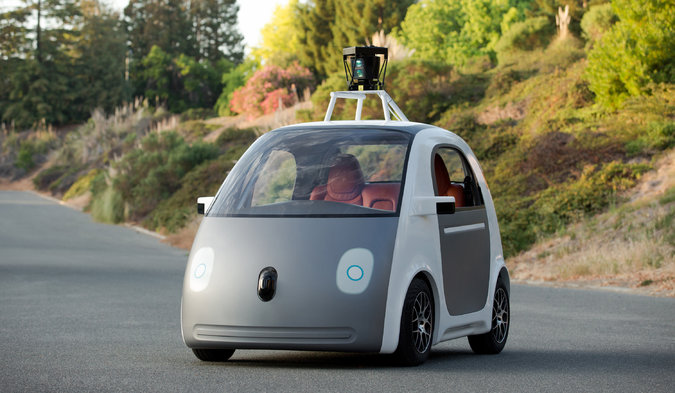
Google’s driverless, autonomous vehicles portend a radical chance in how we get around. (courtesy Google)
AVs (not audiovisual, but rather autonomous vehicles) are poised to change the developed world. It seems that about everyone who looks at transportation comes to the same conclusion. It takes a bit of explaining as to why, and a recent piece I wrote for Rocky Mountain Institute’s Solutions Journal takes a shot at. RMI is launching an AV-focused research group, led by longtime GM research executive Jerry Weiland. Weiland and colleagues the first to admit they’re not the only ones thinking about the implications of self-driving cars. But RMI’s involvement brings heavyweight intellect and a long track record in working with government and business to the party.
It’s one of those stories that was rewritten pretty heavily but came out just as well (freelance writers learn not to take these things personally). I had originally led with:
Perhaps discussions of lightweighting, electrifying and autonomizing vehicles doesn’t quite get your blood pumping. Maybe, to you, the notion of a deeply networked, multimodal mobility infrastructure optimized to move people with great efficiency, striking economy and minimal environmental footprint smacks too much of transpo-geekery.
Fine. How about the idea of slashing your annual driving costs by about 75 percent sound, then? With combined U.S. savings of a trillion dollars a year?
That’s a serious number, and it’s the bottom line of RMI’s latest transportation initiative, one riding a wave of academic and commercial recognition that our century-old, car-and-truck centric mobility system is about to be disrupted in a big way.
Where do the trillion bucks come from? We in the United States spend $1.2 trillion a year – 20 percent of our incomes, on average – for the privilege of paying 56 cents a mile to drive our personally owned, isolated, gas-powered vehicles, which the RMI team calls PIGs. (That’s not even counting the $2 trillion or so annually that pollution, sitting in traffic, roads and parking lots, and traffic accidents cost us). The idea is to shift to fleets of shared, electrified, automated, lightweight vehicles (SEALs), which would, if deployed broadly over the next 20 to 30 years, provide the same or better mobility benefits as PIGS for just 15 cents a mile, or a total of about $200 billion, the RMI team calculates. It all depends on cars going from being personal property to being fleet-based elements of networked, shared, multimodal mobility services.
When I wrote it, I was pretty sure “transpo-geekery” wouldn’t survive an editorial gauntlet of transpo-geeks. But I figured you, intelligent laypeople, and not transpo-geeks, were the true audience. And why not have a little fun?
The only line I’d like them to have kept is this: AVs drive themselves straight into a service model. To understand what I’m talking about, you’ll have to read the story.
